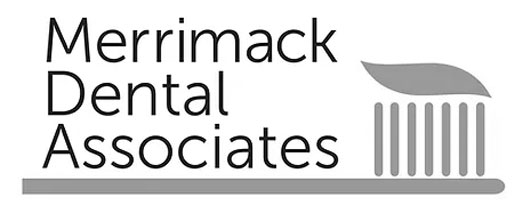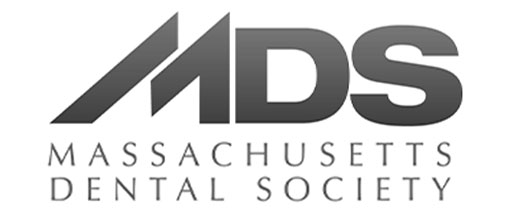At Hassey/Do Duy Dental Associates we treat patients suffering from TMD (Temporomandibular Disorders). TMD includes disorders of the jaw muscles, temporomandibular joints, and the associated nerves that can cause chronic facial pain.
The anatomy of the TMJ
TMJ is the abbreviation for the temporomandibular joint. Sometimes TMJ is used interchangeably with TMD, but TMJ specifically refers to the anatomy of the most complicated joint in the human body.
Location and function of the TMJ
The TMJ is located on both sides of your face, directly in front of your ears. It is a synovial joint; that is, it is surrounded by lubricating fluid. The TMJ accommodates complex movements involved in eating, talking, yawning, singing, and swallowing, along with other movements of the jaws.
Disorders associated with TMJ
TMJ disorders fall into three general categories:
- Myofascial pain, the most common form of TMD. This results in pain or discomfort in the connective tissue covering the muscles surrounding and controlling the jaw, neck, and shoulder.
- Internal joint derangement, or a dislocated jaw, displaced disk, or injury of the rounded end of the jaw bone.
- Degenerative diseases of the joint, including osteoarthritis or rheumatoid arthritis in the joint of the jaw.
Causes of TMD
Often the cause of TMD may not be readily apparent or clear. Sometimes TMD results from:
- strain on the jaw joints and surrounding muscles that control chewing, swallowing, and speech
- bruxism, the involuntary and habitual grinding or clenching of the teeth
- trauma to the head, jaw, or neck
- arthritis or erosion/displacement of the disks in the jaw
- fibromyalgia or irritable bowel syndrome overlapping to worsen the other symptoms of TMJ
- genetics or other psychological/nervous system traits and factors causing a higher risk of developing chronic TMD
Signs and Symptoms of TMD
The most common signs and symptoms of TMD include discomfort, pain, and limited motion of the jaw, including discomfort or soreness. Accompanying symptoms are:
- Chronic headaches
- Pain occurring behind the eyes, in the face, shoulder, neck, and/or back
- Earache or ringing in the ears (not caused by an infection of the inner ear canal)
- Popping, clicking, or locking of the jaw
- Restricted or limited mouth motions
- Grinding or clenching of the teeth
- Dizziness
- Tingling sensation or numbness in the fingers
- A change in the way the upper and lower teeth fit together
- Teeth sensitivity without the presence of dental disease
Other conditions that can affect the TMJ
Types of conditions that can affect the temporomandibular joint include:
Osteoarthritis
Also known as degenerative joint disease, osteoarthritis causes the breakdown of the TMJ cartilage and the underlying bone.
Infections of the jawbone
Jawbone Infections can result when a dental cavity remains untreated. Also, the infection can be a side effect of an extracted tooth or other dental procedures. If not treated, the infection can spread into the jawbone with resulting serious health issues.
Tumors of the mouth and jaw
The tumors can be either benign or malignant. Their symptoms are pain, tenderness, and swelling, along with unexplained tooth mobility.
Post-Traumatic Arthritis
A common form of osteoarthritis, post-traumatic arthritis, is the result of a previous injury or trauma. It wears away the cartilage and can occur in any joint in the body, including the TMJ.
Tendonitis
Painful symptoms of tendonitis can occur in the ear, temple, eye, cheekbone, below the lobe of the ear or at the TMJ. Tendonitis can be the result of past injury or trauma or changes in the bite of the teeth
Treatments for TMD
In some cases, TMJ disorders go away without medical intervention. However, if symptoms persist, there are a variety of treatment options, which include:
Medications
The following medication options can often help to relieve pain resulting from TMD:
- Anti-inflammatories and pain relievers, including over-the-counter or stronger pain medications, as prescribed by the dentist or doctor for a limited time—for example, subscription-strength ibuprofen.
- Tricyclic antidepressants such as amitriptyline, also prescribed for depression, can relieve pain, sleeplessness, and control bruxism.
- Muscle relaxants are sometimes used temporarily to relieve pain caused by TMD created by muscle spasms.
Non Drug therapies
Non Drug treatments and therapies include:
- Mouth guards or occlusal appliances, which are soft or firm devices inserted over a patient’s teeth. Drs. Hassey and Do offer custom-made bite guards designed exactly for the patient’s teeth to:
- end late-night teeth grinding
- keep the patient’s teeth in the best position to improve the bite
- Physical therapy, including stretching exercises to strengthen the jaw muscles. The treatments could also include moist heat, ice, and ultrasound.
- Counseling and education to help the patient understand the behaviors and factors that cause or aggravate TMD—e.g., nail biting, teeth clenching and grinding, or leaning on the chin.
Surgical and other procedures
You could be a candidate for TMJ surgery if you experience:
- intense or consistent, e pain or tenderness when opening or closing your mouth.
- inability to close your mouth completely
- difficulty eating or drinking due to jaw pain or immobility
- progressively worsening of TMD after other nonsurgical treatments
- diseases or structural problems in your jaw joint, as evidenced by radiological imaging, such as an MRI
There are several types of TMJ surgery, and they depend on the patient’s symptoms or severity. Specifically:
- Arthrocentesis, a first-line and minimally invasive treatment that injects fluid into the TMJ and washes out chemical byproducts of inflammation.
- Arthroscopy, which opens small holes in the skin above the TMJ to remove scar tissue, reshape joints, inject medication, or promote relief of pain and swelling.
- Open-joint surgery where the surgeon makes an incision in the jaw to remove bony growths or excess tissue.
On the other hand, if your TMJ symptoms aren’t severe, or consistent, and you have full movement of your jaw, the dentist will recommend alternative treatments described above. A diagnosis and evaluation by dentists who are trained in TMD is the important first step.
If you are experiencing symptoms of TMD, give us a call at 978-688-4411 to set up an appointment, or complete the fields on our appointment page.




